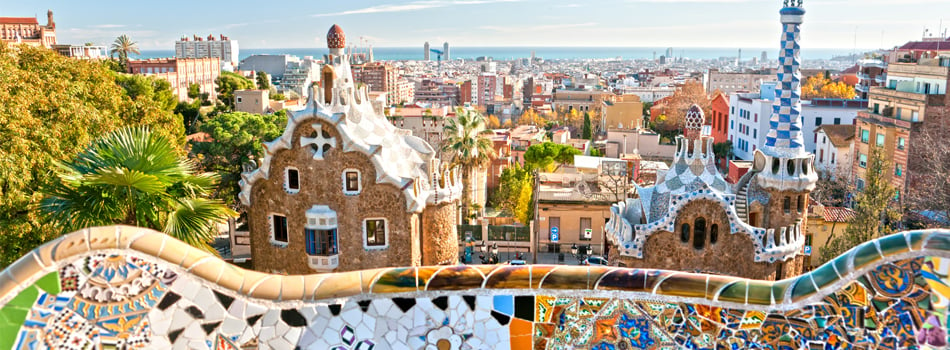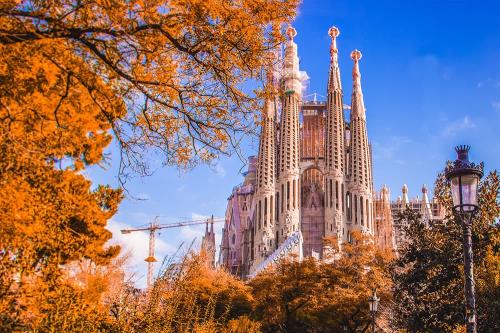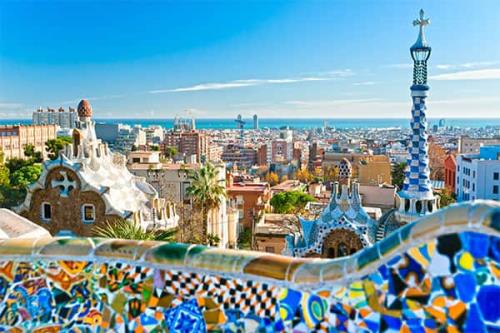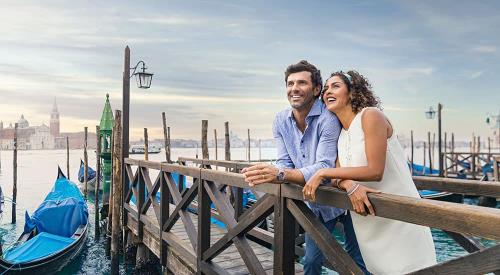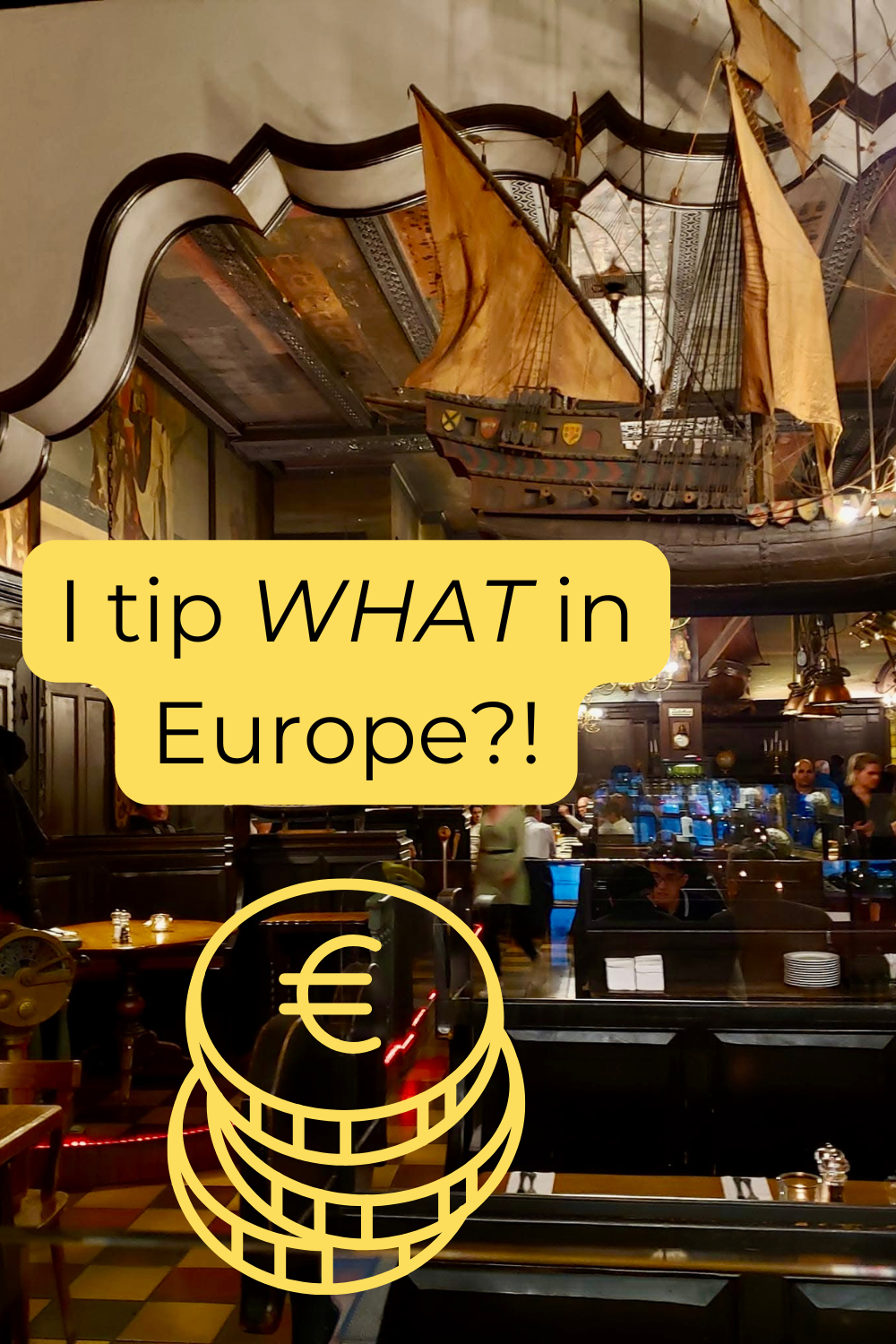Overview
Introduction

Barcelona, Spain's second-largest city, is inextricably linked to the architecture of Antoni Gaudi. His most famous and unfinished masterpiece, La Sagrada Familia, is the emblem of the city.
Like the basilica, Barcelona takes traditional ideas and presents them in new, even outrageous, forms. And the city's bursts of building and innovation give the impression that it's still being conceived. Both the church and the city can be tough places to get a handle on, yet their complexity is invigorating rather than forbidding.
Since it hosted the Summer Olympics in 1992, Barcelona has been on the hot list of European destinations. The staging of the Universal Forum of Cultures in 2004 also raised the city's profile. Over the past decade, better infrastructure, increased cruise ship traffic and a reputation for gastronomic excellence have put Barcelona at the forefront of European city destinations.
Must See or Do
Sights—La Sagrada Familia; La Pedrera; La Catedral (La Seu); Santa Maria del Mar.
Museums—Museu Picasso; Museu Nacional d'Art de Catalunya; Fundacio Joan Miro; Museu d'Historia de la Ciutat; Museu Maritim de Barcelona; Caixaforum.
Memorable Meals—Lunch at Escriba Xiringuito on the seafront; high-end Mediterranean fare at Tragaluz; fashionable, inventive dishes at Semproniana; Albert Adria's Nikkei cuisine at Pakta; creative, seasonal Catalan fare at Gresca.
Late Night—Flamenco at Los Tarantos; drinks and a view at Mirablau; wine at La Vinya del Senyor; dancing at Otto Zutz.
Walks—La Rambla, the Barri Gotic and the Born; along the waterfront; Montjuic; Park Guell; Collserola woodlands.
Especially for Kids—Zoo de Barcelona; a ride on the roller coaster at Parc d'Atraccions del Tibidabo; the CosmoCaixa science museum.
Geography
Barcelona is a large city with many districts, but the most popular attractions are found in a handful of areas that, for the most part, flow into one another. Beginning on the waterfront, Port Vell (Old Port) encompasses the harbor area and Barceloneta, a neighborhood that was once home to fishermen and has been renovated. The Vila Olimpica (Olympic Village) lies just east of Port Vell; it has its own marina and dozens of bars, restaurants and night clubs. The Old Port, too, has undergone extensive renovation in the past decade or so and is now the city's seaside recreation area.
La Rambla, Barcelona's famous boulevard and almost a district unto itself, begins at Port Vell and extends inland to Placa Catalunya. La Rambla is the heart of the central city, and it forms the boundary between El Raval, the neighborhood to the west of the boulevard, and the Barri Gotic (the Gothic Quarter), which lies to the east.
The Barri Gotic, the oldest part of Barcelona, has many bars, restaurants, museums and historic sites. Adjoining it on the east side of Via Laietana are the old quarters of Sant Pere and La Ribera, with its fine medieval mansions and trendy shopping and nightlife around the old Born market (now closed to shoppers but preserved as a historic site).
Continuing inland from the Barri Gotic, you'll enter the Eixample, an upscale shopping and residential area, crisscrossed by wide avenues, where many of the modernisme buildings are located. Adjoining it to the northwest is the chic villagelike district of Gracia, which has many pleasant restaurants and eclectic shops and galleries. Beyond Gracia, the city climbs the lower slope of Mount Tibidabo.
Montjuic, a prominent castle-topped hill covered with parks, gardens and pathways west of Port Vell, is easily visible from the central city. Museums and other attractions are found on this high ground.
The renovated district of Poblenu is more detached from the other areas and is found on the beachfront farther to the east at the end of the T5 tram line.
History
As with many places in Europe, Barcelona's history has much to do with invasions and conquest. The Romans founded the original settlement, named Barcino, in 133 BC, and the town was later held by the Visigoths, the Moors and the Christian Carolingian Empire under Charlemagne's son, Louis the Pious. In AD 988, Barcelona won independence from the Carolingian kings and became the dominant political and military force in the region of northeastern Spain later known as Catalonia—or Catalunya, in the native Catalan tongue. (Much of the city's character stems from the fact that it identifies itself more as part of Catalonia than of Spain.)
By the late 1400s, Catalonia was politically linked with other regions of Spain, but the region continued to enjoy autonomous rights and privileges until the early 1700s. That changed after the War of Succession, when Catalonia backed the losing side led by Archduke Charles of Austria. Spain's King Philip V abolished Catalonia's government and laws and made Castilian (Spanish) the language of official business, rather than Catalan. This was but one of many conflicts between Catalonia and the central authority of Spain.
By the late 1800s, Barcelona had become one of Spain's most industrialized areas, and the factories spawned significant wealth and a dynamic middle class. Industrial profits underwrote the modernisme movement in architecture—Barcelona's version of art nouveau that was spearheaded by architect Antoni Gaudi. The industrial riches did not trickle down to the working class, however, and radical movements—especially anarchism—found willing converts in the city's poorer districts. A violent uprising in 1909 was a precursor to the upheaval unleashed by the Spanish Civil War in the late 1930s, when Barcelona was ruled by leftist trade unions for several years. The city remained a stronghold of the losing Republican cause until the end of the war and paid the price afterward. During the long reign of Francisco Franco (1939-75) the Catalan identity and language were viciously suppressed.
Catalonian home rule was restored after Franco's death in 1975, and the Catalan language was declared co-official with Castilian. Beginning in the late 1970s, a forward-looking urban policy was adopted in Barcelona, and the regeneration reached its peak in preparation for the 1992 Summer Olympics. Since then, its popularity as a tourist and recreation center has continued to grow.
Politically, the city and region have become increasingly detached from Madrid's centralist rule; in 2010, more than a million Catalans demonstrated in favor of independence from the rest of Spain. That same year their official abolition of bullfighting—effective from 2012—was in effect a further rejection of deep-rooted Spanish traditions.
In the municipal elections of 2015, the Barcelona en Comu platform won, led by Ada Colau, who was named mayor. Colau was in favor of more social policies and fighting against corruption.
In October 2017 the Generalitat organized an illegal referendum on independence and there were altercations stopped by the police. Some politicians were arrested and are currently in jail while the trial is being held. These events lent a negative image to Barcelona and Spain at large: Many companies changed their headquarters to other Spanish cities, and tourism was affected.
In the municipal elections of May 2019, there was a tie between Barcelona en Comu and Esquerra Republicana de Catalunya, both with ten councilors. Ada Colau was re-elected mayor after reaching a government pact with the Socialist Party.
Potpourri
Under Franco's regime, Catalan was forbidden in all forms—printed, written or taught. Now the city offers free courses to anyone who would like to learn it.
Although Antoni Gaudi created some of the most extravagant buildings ever made, he was a humble and religious man who rejected vanity in all its forms. When he was struck down by a tram in 1926, his clothes were so shabby that police assumed he was a vagrant. He died three days later in a hospital in the dilapidated Barri Xino district.
It has been estimated that to build the central spire of the Sagrada Familia, which will rise 560 ft/171 m high, the subterranean pylons would have to weigh 8,000 tons each for it to withstand an earthquake or gale-force winds of 100 mph/161 kph.
Barcelona's colorful Fiesta de Sant Medir, held in the Gracia district in early March and dating from Roman times, honors Saint Emeterio, or Sant Medir, the patron saint of broad beans. During the festivities, thousands of sweets are handed out to delighted children.
The name of Mount Tibidabo comes from the story of Christ's wanderings in the wilderness, when the Devil took him to a mountaintop and offered to give him all that he could see if Jesus would fall down and worship him. Tibi dabo means "I will give to you" in Latin.
The stadium on Montjuic, called Estadi Olympic, was intended to host the People's Olympics in 1936, but Franco's coup the day before the scheduled opening kicked off the Spanish Civil War and put an end to the games. Catalans had to wait till 1992 when, in the newly refurbished stadium, Montjuic hosted the Summer Olympic Games that made Barcelona internationally famous.
Location
Barcelona is an important stopping-off point for major cruise lines in the Mediterranean, and even the largest ocean liners can dock in its port.
Barcelona's port has nine international passenger terminals clustered around Port Vell, the Old Port district at the foot of La Rambla, minutes away from the city's most important tourist attractions. These terminals are the busiest and most modern in the Mediterranean, offering many services, including currency exchange, duty-free shops, restaurants, internet access points, bus stops and taxi ranks.
Large ferries connect the city to the Balearic Islands and all of the major Mediterranean ports. Phone 902-222-858. http://www.apb.es.
Shore Excursions
Typical shore excursions offered include a tour of Antoni Gaudi's architectural wonders, a walk through the Gothic Quarter, a tour of the Boqueria market and local food culture, a visit to the Picasso and Miro museums or a bus tour of the spectacular Montserrat mountain region with its famed monastery.
Barcelona is a majestic city that has a lot to offer to tourists. If you're planning a cruise that starts or ends in Barcelona, consider spending a few extra days in the city before or after your cruise vacation. If this is your first time in Barcelona, here are a few of our recommended sights and attractions.
Before experiencing your Norwegian cruise vacation from Barcelona make sure to soak in the sights and get to know the port city. It is an amazing combination of old world culture and modern day masterpieces. Plan ahead and spend some time getting to know this incredible city.
Have you thought about finally booking your dream Italy cruise? Norwegian Cruise Line offers many itineraries departing from cities such as Venice, Rome, and Barcelona. Now is the ideal time to book your 2022 Italy cruise. Norwegian has gone above and beyond to ensure your next cruise is the best and safest experience possible. Get ready to dive into the art, culture, and delectable cuisine in this Mediterranean region.
Contact us for the latest Barcelona deals.














